How did it all begin ?
| Starting in 1984, Stéphane Dumonceau-Krsmanovic initiated a dozen experiments on the modification of consciousness levels, and particularly, on the effects of sensory isolation on learning abilities.
At the time, he specialised in mental training for high-level athletes, notably gymnastics on apparatus with the gymnast Jean-Louis Morice and the Belgian national team, athletics with the young athlete Carole Walschot, a rising star in her category, and squash with the world number 12, Gamal El Amir. He also took part in the mental re-training of Robert Vandewalle, the former judo gold medallist form the Seoul Olympic Games. At the time, he successfully perfected a motivational method for success for the athletes (who had little support given the very low budgets available in Belgium) and a method for learning high-risk movements (gymnastics apparatus) using visualisation in sensory isolation. |
|
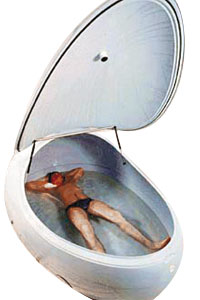 |
Sensory isolation tank |
|
|
|
The super learning technique consisted of several stages :
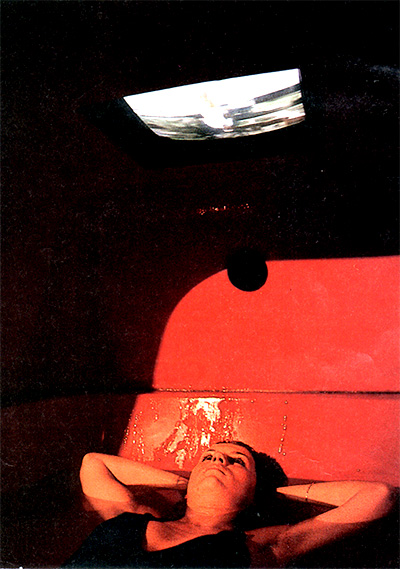 |
| Tank with television |
|
|
- Filming of the movement(s) partially completed by the athlete in the field and comparative analysis of the points to be improved.
- Repetition of the "perfect" movement accomplished by a competitor at the Olympic Games, this time in partial isolation (with a television screen on the equipment ceiling).
- Active visualisation work in total isolation.
While the effects of sensory isolation and the surprising results in terms of the ability to reach profound relaxation and super learning were achieved (highly significant results), the fact remained that many aspects of these exceptional environments made them very difficult to use: they were big (2m20 long/1m60 wide), heavy (1 ton approximately) and very expensive…and practically impossible to move, although a specially-equipped lorry was used in the paddocks for two teams of drivers during the 24 Hours of Francorchamps... |
It was at this time that Stéphane Dumonceau-Krsmanovic discovered the studies and books of Dr. Lefebure and became interested in the opposite principle, that is, sensory hyperstimulation. This was a total surprise: amazingly, he discovered that saturating the mind with information (literally bombarding it with audiovisual stimulation) caused it to withdraw and isolate itself from the outside world nearly immediately! This was a revelation! In fact, it was at this time that he saw that it was possible to replace the cumbersome sensory isolation tanks with super-light, condensed technology that seemed to be equally effective.
Stéphane Dumonceau-Krsmanovic began research as a doctoral candidate in sport psychology at ISEPK (Free University of Brussels) to determine the causes and effects of this type of stimulation.
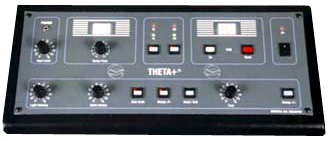 |
| Thêta Plus |
|
|
He perfected a device based on the writings of the Frenchman Dr. Lefebure and the Belgian Plateau that mixed perfectly synchronised pulsating sound and light. The device, called the "Theta PLUS", was intended to generate the so-called "twilight" state at the edge of sleep, the exact state induced spontaneously during sensory isolation. At the time, the device was about 40 cm long and weighed over a kilo. |
In 1985, after a year of experiments, he created a company (formerly Fonda-Mental SA) which began to produce this type of machine in collaboration with the electronics firm Trump sa. The operation of the device was fully manual.
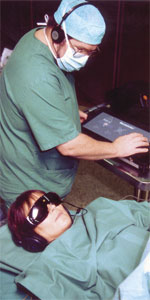 |
| Anaesthesiology |
|
|
In 1986, and for the following two years, the "Theta Plus" was sold solely to the medical field, to doctors, physical therapists and sophrologists. It was sold with the help of the French company Medis-Ortho which increased sales of the devices in France and in 1988, held a convention at Beaulieu-sur-Mer which brought together the therapists who used the variable frequency audiovisual stimulator in France. The renowned De Rougier, the trainer of the Monaco football team, supervised the operation at the time. The convention revealed that the results obtained by the majority of therapists were very encouraging and that, in particular, there were no contraindications other than rare photo-sensitive epilepsy (which has, in fact, never been encountered but is theoretically possible as it is with video games and television). |
As a result, S. Dumonceau's company quickly decided to commit an electronics research and development budget to the miniaturisation of the system.
In the meantime, research with private laboratories specialised in electroencephalograms established new and specific protocols which enriched knowledge in the field.
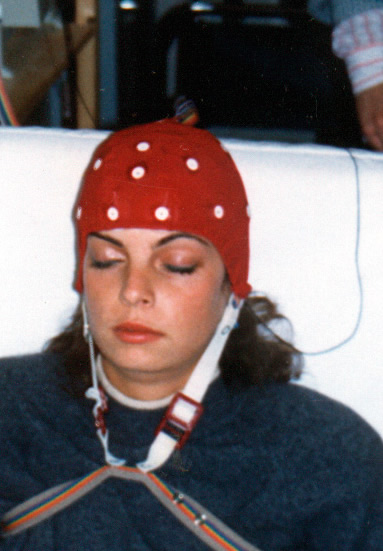 |
| EEG electrodes |
|
|
Miniaturisation also led to the introduction of LEDS which, at the time, only emitted red light. After a great deal of hesitation, and thousands of tests with glasses emitting red and white light, it was determined that red light, although slightly inferior from the standpoint of colour and shape visualisation, induced exactly the same effects. Stimulated by white light, closed eyelids allowed light to filter in and it became orangish due to the significant vascularisation of the skin of the eyelids in that area.
LEDS were definitively selected given their great technical ease of use. |
|
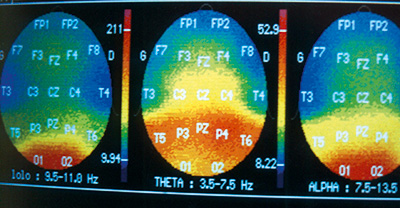 |
| EEG before AVS |
| |
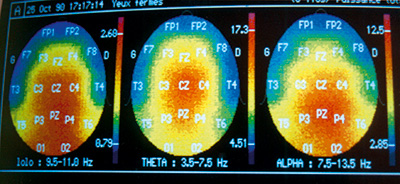 |
| EEG after AVS |
|
| |
|
|
 |
| Dreamer |
|
|
The DREAMER was born in October 1989. No bigger than a small deck of cards, it offered six different programd experiences on a microprocessor. The pre-defined programs produced specific states of consciousness ranging from sleep to meditation to extreme awareness at the push of a button...! It was a revolution.
The many manual operations required to set the programs in memory would no longer have been possible, even with four pairs of hands, given the number of settings that had to be done at the same time and were now synchronised simultaneously. |
The 1980s were the ideal time for the development of this type of device. The catalyst was the micro-electronics revolution that took place during that period. It was a revolution that enabled the development of the computer market, the outcome of which we all know today. Thanks to the development of electronics, a complex machine the size of a large suitcase was now contained in the small DREAMER console.
 |
| The Dreamer in Japan |
|
|
The DREAMER was immediately launched in Europe where it met with significant success. The DREAMER was then quickly exported to the four corners of the world. It was very successful among "early adopters" in Japan, Korea, Europe and Latin America.
Further studies enabled greater refining of the brain stimulation modes. In addition, the progress made in electronics, and notably, the new generation of ultra-miniaturised microprocessors and components (no longer placed and soldered on a printed circuit board, but placed by robotic arm and directly glued without human intervention) also enabled an increase in reliability and left enough room for a small battery. The DREAMER became completely portable. It could be used on aeroplanes and on vacations. It could easily be carried in a small pouch and had sufficient power for more than twenty sessions. |
Without actually inventing, S. Dumonceau made a major contribution to perfecting the overall AVS-type stimulation system. He had, in particular, introduced the first device providing several auto-programmed sessions based on an original protocol directly inspired by his EEG experience (electroencephalography). Also to his credit was the fact that he was interested in the technique from a medical and wellness standpoint rather than as an experimental curiosity with no real value or application to life hygiene or health.
In addition to having skilfully combined pulsating sound and light, having adapted the ideas to modern electronics and introduced several new concepts to the operational protocols, his company's breakthrough was to have been willing to demystify this type of device and create a miniature one for the general public. And at a very reasonable price for everyone, that is, close to the price of a simple disk player which was being produced by the millions!
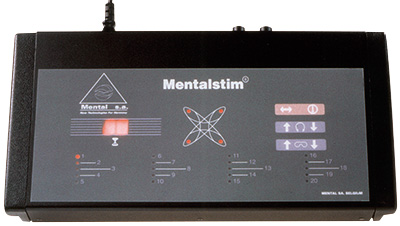 |
| The Mentalstim |
|
|
Stéphane Krsmanovic created a second professional device in 1998: the MENTALSTIM. The software of this fully programmed device brought together the latest knowledge about the effects of sound and light stimulation on the brain. A specific study of the sound types offered was completed successfully and increased effectiveness and, in particular, the range of tonalities. |
| |
|
|
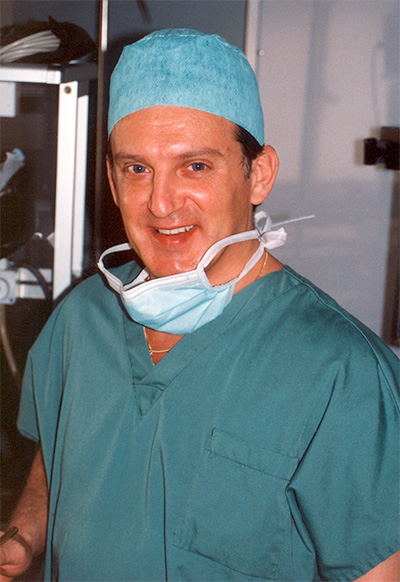 |
| Dr. Litchincko |
|
|
At the time, the device was equipped with an alpha biofeedback option and a microphone for therapists who wanted to introduce sessions with their own voice.
The MENTALSTIM was used in dentistry, surgery and locoregional anaesthesia and in the paramedical field (physiotherapy, psychology), etc.
S. Dumonceau-Krsmanovic, together with Dr. Lisoir and Dr. Van Alphen, doctors specialised in psychosomatics, and Dr. Litchincko, an anaesthesiologist trained in suggestion, gradually began developing audiocaments which were intended as the perfect voice complement to audiovisual stimulation. |
| |
|
|
S. Dumonceau launched an even more sophisticated system in 2000. It was a sort of decoder for the light stimulations that were now included on the sound tracks of the recordings. To ensure that they were not audible, the stimulations were coded as inaudible, high-frequency sounds (above 17,000 hertz). The Mind Booster (a name which later became common) was born. Audiocaments, produced as compact disks, were launched in pharmacies in Belgium in 2003. Innovex, the leader in medical office visits was tasked with presenting the unique concept to Belgian doctors.
In 2005, the Belgian Ministry of Health recognised audiocaments as an alternative to anti-depressants and sleeping pills in its annual brochure for Belgian general practitioners. The original Mind Booster was offered as a logical continuation for the users of audiocaments in several pharmacies that had sold them successfully.
The concept was further broken down at this time: a generator or decoder, a CD player, a pair of glasses, and earphones were required. This made use more complex but also broke down the concept and facilitated understanding... |
|
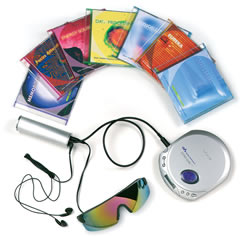 |
| The Mind Booster |
|
| |
|
|
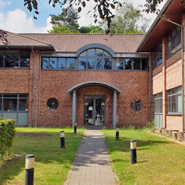 |
| PSiO Technologies's offices |
|
|
S. Dumonceau created PSiO Technologies in 2007. The company was international in scope and specialised in R&D for variable frequency audiovisual stimulation. This time, the project consisted in bringing together all of the existing electronics, including the MP3 reader and the battery, in the frame of glasses that also included small audio jacks for mini earphones in its arms. In addition, research added 12 stimulation colours and a two-lens display with completely homogeneous colours. This time, the device would be useable with open or closed eyes. The field of photomodulation would also be added to a method that was already very effective with the original red diodes. |
In fact, more and more studies indicated the influence of coloured light on behaviour, notably, at the University of Liege (Belgium) which highlighted the impact of a certain blue wave length on melatonin inhibition as well as on stimulation of serotonin secretion (anti-depressant hormone). This new track was therefore a very interesting addition to this type of stimulation.
And there's more : 3 families of applications of use are described in the download on the download platform :
- Morning meditation sessions
- Afternoon turbo nap music sessions
- Evening deep relaxation sessions
|